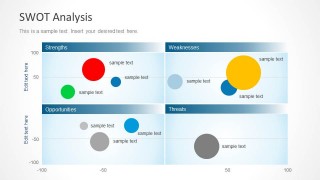Learn more how to embed presentation in WordPress
Copy and paste the code below into your blog post or website
Copy URL
Embed into WordPress (learn more)
Comments
comments powered by DisqusPresentation Slides & Transcript
Presentation Slides & Transcript
Why are there “Lazy” ants?
Explaining the occurrence of seemingly unproductive workers in social insects
D Charbonneau ▪ A Dornhaus
Most animals are “lazy”
“All cold-blooded animals and a large number of warm-blooded ones spend an unexpectedly large proportion of their time doing nothing at all, or at any rate, nothing in particular.”
-Elton 1927
Solitary animals
>50%
Harvestmen
(Williams 1962)
85%
Hummingbirds
(Wolf et al. 1975)
Social animals
60%
Temnothorax ants
(Dornhaus et al. 2009)
Eusocial insects
Animals across a wide range of taxa, life histories and ecologies have been reported of spending >50% of their time resting
80%
Honey bees
(Schmid-Hempel 1990)
70%
Howling monkeys
(Smith 1977)
75%
Lions
(Schaller 1972)
Most animals are “lazy”
“Laziness” in social animals
Inactivity in social animals is further complicated by social behaviors, such as division of labor and specialization
In groups, the amount of work required for the survival of an individual is dependent upon the amount of work done by others in the group.
division of labor
“Laziness” in social insects
Inactivity in social animals is particularly interesting because the colony can regulate the number of workers it produces
If >50% of the colony is inactive at any time, why would the colony produce so many apparently extraneous workers?
Why are there “Lazy” ants?
Model system used to answer this question:
The ant: Temnothorax rugatulus
Worker ant
Queen ant
What “laziness” looks like
4x speed
Inactive workers
Active workers
Recording ant behavior
Ants
Water
Food
“Stone” wall
Sample unit: 5 minute HD videos
Behaviors and activity
Building
Foraging
Wandering outside nest
Brood care
Self-Grooming
Groom other
Be groomed
Trophallaxis
Eating
Moving but not active
Stationary and not active
Active
Wandering Inside
Inactive
Similar to: Cole, BES 1986
Observable task
Activity category
Behaviors and activity
Building
Foraging
Wandering outside nest
Brood care
Self-Grooming
Groom other
Be groomed
Trophallaxis
Eating
Observable task
Worker moving “stones” to build a wall around the colony
Worker moving and cleaning an ant larva
Worker grooming itself
and a nestmate
Worker eating a fruit fly
Worker performing trophallaxis (sharing food)
Defining “inactivity”
Colony-level inactivity:
Individual-level inactivity:
Mean proportion of time an individual worker spends inactive during one video
Mean individual-level inactivity within a colony
or
= % of colony time inactive
i.e. % of worker time inactive
Inactivity varies
At the individual-level
And at the colony-level
Colony 2
Colony 3
Inactivity varies
Focus on individual-level variation
And at the colony-level
Colony 2
Colony 3
Main interest
Explaining consistent individual differences
Main interest
Explaining consistent individual differences
a
a
a
a
a
Possible answers:
Reserve workers, work availability, task specialization
Selfishness,
policing
Unknown function
Shift work
More Presentations

By dcharbonneau
Published Mar 5, 2013





